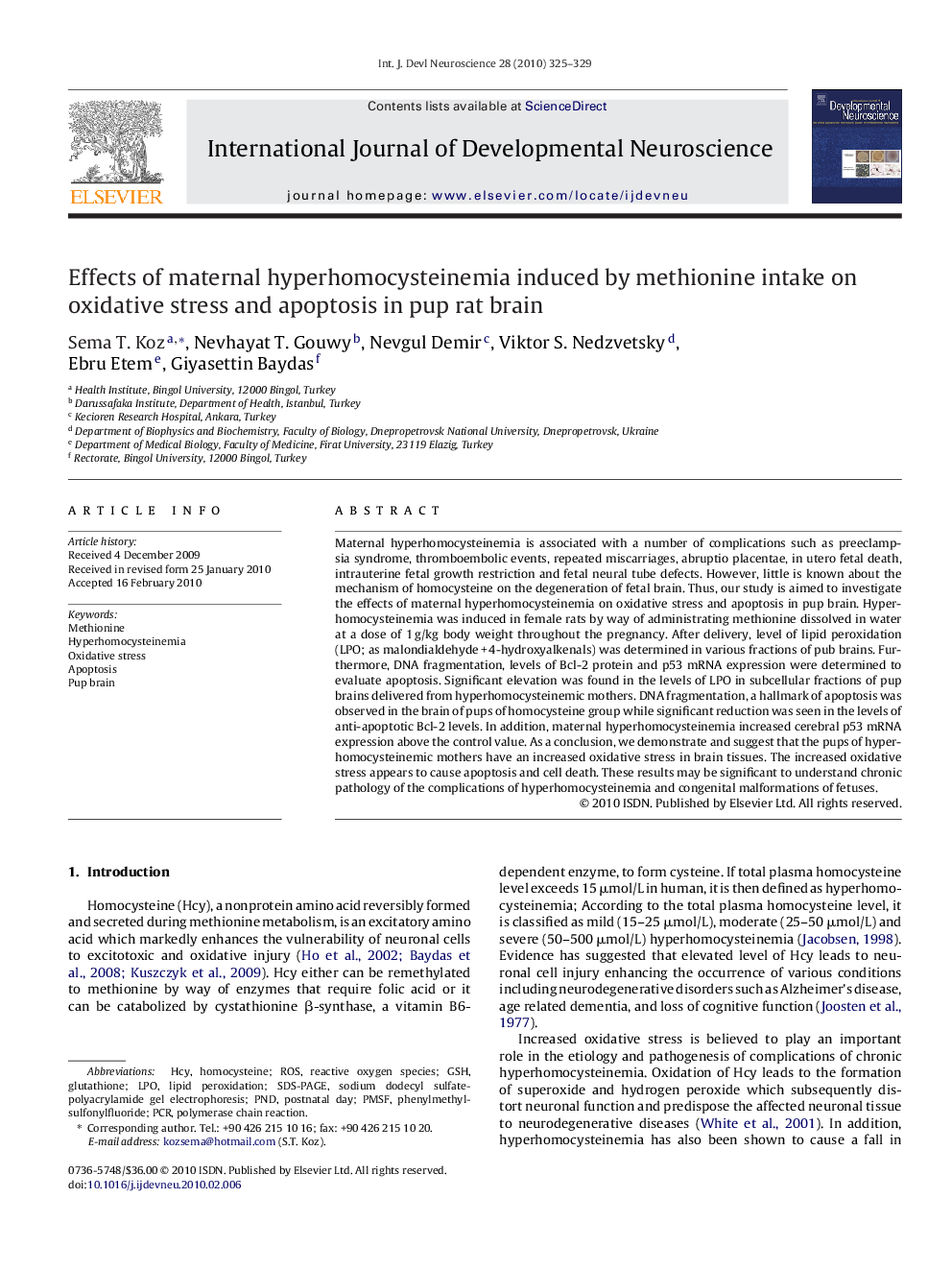| Article ID | Journal | Published Year | Pages | File Type |
|---|---|---|---|---|
| 2786754 | International Journal of Developmental Neuroscience | 2010 | 5 Pages |
Maternal hyperhomocysteinemia is associated with a number of complications such as preeclampsia syndrome, thromboembolic events, repeated miscarriages, abruptio placentae, in utero fetal death, intrauterine fetal growth restriction and fetal neural tube defects. However, little is known about the mechanism of homocysteine on the degeneration of fetal brain. Thus, our study is aimed to investigate the effects of maternal hyperhomocysteinemia on oxidative stress and apoptosis in pup brain. Hyperhomocysteinemia was induced in female rats by way of administrating methionine dissolved in water at a dose of 1 g/kg body weight throughout the pregnancy. After delivery, level of lipid peroxidation (LPO; as malondialdehyde + 4-hydroxyalkenals) was determined in various fractions of pub brains. Furthermore, DNA fragmentation, levels of Bcl-2 protein and p53 mRNA expression were determined to evaluate apoptosis. Significant elevation was found in the levels of LPO in subcellular fractions of pup brains delivered from hyperhomocysteinemic mothers. DNA fragmentation, a hallmark of apoptosis was observed in the brain of pups of homocysteine group while significant reduction was seen in the levels of anti-apoptotic Bcl-2 levels. In addition, maternal hyperhomocysteinemia increased cerebral p53 mRNA expression above the control value. As a conclusion, we demonstrate and suggest that the pups of hyperhomocysteinemic mothers have an increased oxidative stress in brain tissues. The increased oxidative stress appears to cause apoptosis and cell death. These results may be significant to understand chronic pathology of the complications of hyperhomocysteinemia and congenital malformations of fetuses.
